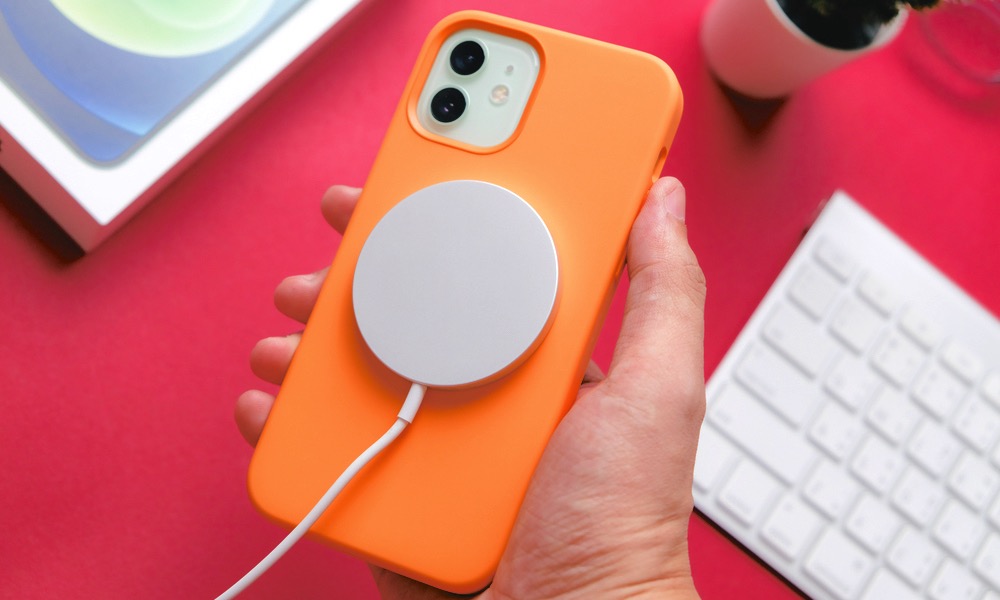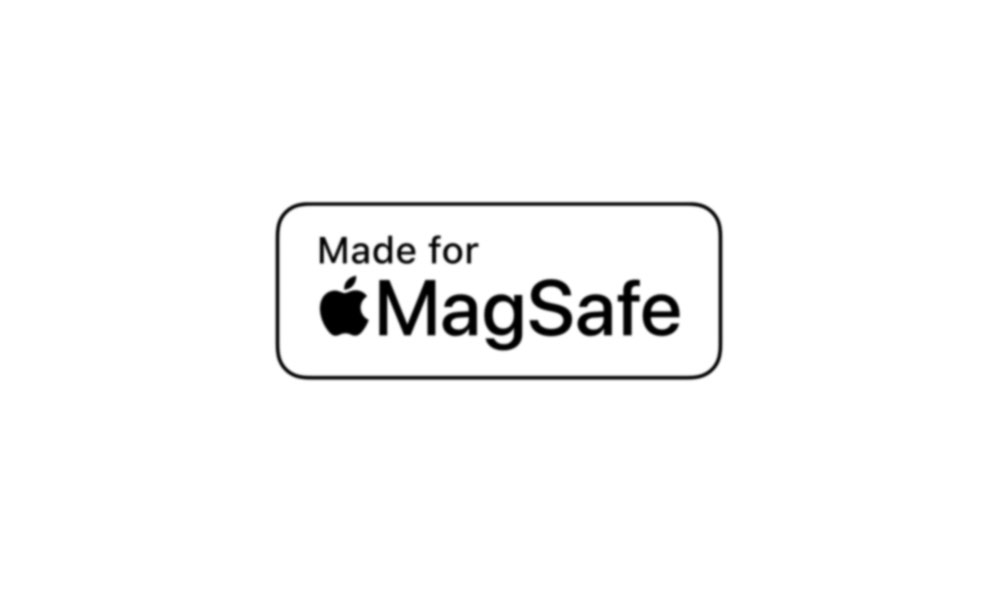Not All MagSafe Chargers Are Created Equal (Here’s How to Tell the Difference)
 Credit: Framesira / Shutterstock
Credit: Framesira / Shutterstock
Toggle Dark Mode
The iPhone 12’s MagSafe charging feature is a cool piece of technology, but as more accessory makers begin to jump into the fray, it’s important to understand that not every charger or battery pack that attaches to the back of your iPhone using the magnetic ring necessarily works the same way.
We already explained a few months ago how MagSafe can be a confusing mess even when dealing with Apple’s own MagSafe chargers, and now that third-party chargers are available, it’s gotten even more confusing.
The most important thing to keep in mind is that there are MagSafe chargers, and then there are magnetic chargers, and while both attach to the iPhone in the same way, they actually work a bit differently.
MagSafe Chargers
There’s a lot more to Apple’s MagSafe charging system than just the magnetic attachment. While that’s handy, what MagSafe is really designed to bring to the table is a collection of “smart” accessories that actually communicate with the iPhone, as opposed to merely attaching to it. It’s this intelligence that makes MagSafe the future of the iPhone.
It’s this MagSafe technology that allows the iPhone to show a colourful ring when an Apple MagSafe case is attached, switch to a smaller clock display when the iPhone is inserted into the MagSafe leather sleeve, and display a round charging status ring when connecting an official MagSafe charger.
However, MagSafe chargers go beyond just showing a fun animation — they also offer charging speeds that are up to twice as fast — 15 watts as opposed to the 7.5 watts that a normal wireless charger provides.
To be clear, some of this will vary depending on which MagSafe charger and power adapter you’re using. For example, there are several conditions under which Apple’s MagSafe Duo will charge at slower speeds. In all cases, however, as long as you’re using a proper USB-C power adapter, the charging speeds should still be better than the 7.5 watts offered by a standard Qi charger.
While we can only speculate on Apple’s reasoning behind locking the faster charging behind MagSafe authentication, we suspect it has at least something to do with proper charger alignment; MagSafe guarantees that the coils will always be perfectly lined up, meaning you’ll always get the full 15W without wasting any power or generating excessive heat that could damage your iPhone.
Of course, more cynical folks will also suggest that this was just one more way for Apple to maintain control and collect licensing fees from accessory makers. While we certainly wouldn’t rule that out, we’d simply add that Apple is not the first smartphone maker to come up with a proprietary standard for faster wireless charging.
In fact, it’s something that the Wireless Power Consortium — the group that regulates the Qi standard — specifically expects and allows for. In essence, the WPC has a Baseline Power Profile (BPP) that offers standard 5W charging, and an Extended Power Profile (EPP) that offers speeds of up to 15W. However, many smartphone manufacturers, including Samsung, Google, and Apple had already cooked up their own methods to move beyond those speeds.
So, whether it’s Apple’s MagSafe or Samsung’s Fast Wireless Charging 2.0, they’re all ultimately proprietary standards that won’t work with each other anyway.
Magnetic Chargers
Since Apple can’t really control or license the laws of physics, there’s nothing preventing any accessory maker from putting magnets in a charger or battery pack to let it conveniently attach to the iPhone.
However, if these aren’t certified by Apple as “MagSafe” accessories, then all you’re really getting is a 7.5-watt Qi charger with magnets.
In other words, a non-MagSafe magnetic charger will work in the same way as any other Qi wireless charger. It just has magnets to hold it onto your iPhone. You also won’t get any fancy animations when attaching it.
Keep in mind the term “MagSafe” is actually trademarked by Apple, so if accessory makers are following the rules, they shouldn’t be advertising a “MagSafe” charger unless it’s actually certified for 15W charging as part of Apple’s Made-for-iPhone (MFi) accessory program. However, some legitimate accessory makers like Anker and Belkin are confusing things by advertising their chargers and battery packs as “MagSafe-compatible.”
This doesn’t (yet) seemed to have raised the ire of Apple, and to be fair there’s actually nothing really wrong with it for accessories that don’t involve power transfer. After all, if you’re just buying a stand or dock, the magnets are the only real “MagSafe” feature you’d care about.
Most of the better accessory makers are also trying to be reasonably upfront about this. For example, Belkin has specifically grouped its accessories into “MagSafe Chargers & Accessories” and “Magnetic Chargers and Accessories,” while also clearly noting the 7.5W charging speeds right in the titles for the non-MagSafe ones.
With the vast majority of accessories out there, however, you’ll want to make sure you look closely, especially if you’re ordering something from a lesser-known brand on Amazon. In fact, we’d go so far as to say that at this point there’s a good chance that if an accessory is coming from a company you’ve never heard of, it’s not going to be true MagSafe.
Also watch out for magnetic accessories that aren’t iPhone-specific, as there’s a good chance they’ll advertise charging speeds that don’t apply to the iPhone. For example, if a battery pack says it can charge a device at 15W but doesn’t bear the “Made for MagSafe” logo, then it will still only supply 7.5W to your iPhone. In this case, the “15W” designation is likely referring to Qi charging speeds for other devices like Samsung phones.
Should You Care?
With all of that having been said, you’re probably now wondering how much having a proper MagSafe charger really matters.
The short answer is that it depends entirely on whether you want the fastest possible charging speeds.
There’s actually nothing at all wrong with buying a non-MagSafe charger that simply attaches to your iPhone 12’s magnetic ring. As long as it’s a properly Qi-certified charger from a reputable manufacturer, it’s the same as any other 7.5W Qi charger, and it won’t damage your iPhone.
Let’s face it, there are many scenarios where fast charging is not necessary. Most people don’t need 15W wireless chargers on their bedside tables, since 7.5W is more than fast enough to recharge even an iPhone 12 Pro Max overnight.
In fact, faster charging can actually be detrimental, as it produces more heat. This will have a negative impact on battery health, at least in theory; whether that’s enough to shorten the life of your iPhone significantly is more open to debate, especially if you’re the sort of person who upgrades every year or two.
On the other hand, if you’re looking for a charger for your desk, car, or even your living room, then having the fastest possible wireless charging speeds can be much more important. In those situations you’ll often want to juice up as quickly as you can between meetings or other activities, and of course, a 15W charger will do that twice as fast as a 7.5W charger will.
At the end of the day, both MagSafe and magnetic chargers can be great accessories for your iPhone. It’s simply important to know the difference so that you can buy the best one for your particular needs and don’t end up with any surprises when your iPhone isn’t charging as fast as you expected.







